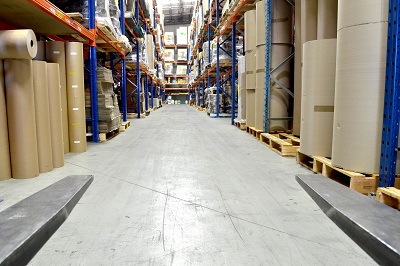Other Voices: To reduce packaging costs, plan for every part
PFEP helps maintain a healthy supply chain as the foundation for short-term continuous improvement, long-term operational excellence, serving as a platform for communication and fine-tuning operations throughout a product’s life cycle.
Editor’s note: The following column by William Crane, CEO of Ann Arbor, Michigan-based on-demand services and software technology company IndustryStar, is part of Modern’s Other Voices column, a series featuring ideas, opinions and insights from end-users, analysts, systems integrators and OEMs. Click here to learn about submitting a column for consideration.
————-
Leaders at manufacturers who consistently outperform industry performance metrics echo a passion for data by investing time to carefully track critical commercial information needed to optimize their supply chain. Small adjustments to the way parts are packaged save time and money in production and transportation, but this requires enormous amounts of accurate real-time data.
Fortunately, there is a system for effectively organizing packaging information into a single place of reference – Plan for Every Part (PFEP). When PFEP is implemented as part of a company’s broader lean game plan for success, it can help you reduce costs in the way you receive, produce, store, and ship your parts and products.
3-Step Game Plan for Packaging Optimization Success
Step 1. Design & Develop PFEP Template
Establish a dedicated, cross-functional team to expedite a packaging optimization initiative and spark the culture change needed to adopt PFEP, ensuring stakeholders understand how it will improve operations and enable the company to succeed. Determine where to start, e.g. 1) internally “optimizing your plant(s) packaging inside your four walls” or 2) externally “optimizing your inbound packaging from your suppliers.”
If you have not optimized your internal packaging, start there first. Stabilize results, then turn your energy outward to partner with your suppliers to drive results.
Automated PFEP software is critical to swiftly optimizing packaging for large numbers of parts. Irrespective of the number of parts you manage, Automated PFEP software can: precisely define inventory levels, keep a constant check on inventory consumption, and recommend supply chain adjustments. Automated PFEP software also frees up your time, empowering you to more quickly enact your optimized packaging changes that realize cost reductions.
Step 2. Gather & Populate Data
Gathering packaging data, often from different systems, is a time-consuming activity, so it may be a struggle staying motivated when starting out. To counter this, celebrate team success by tracking the identification of accurate data sources, along with tracking the overall percentage of total packaging data inputs acquired.
Reduce team member error when adding data by leveraging proven formulas for calculating pull signals and planned maximum inventory level, costs, and days. The goal at this stage is to understand your purchased parts better by populating the PFEP database, not to plan anything or act on the data.
Step 3. Maintain & Optimize Data to Make Better Decisions
Now it is time to optimize your packaging. As one example, a Tier I automotive supplier of assemblies could partner with their suppliers, Tier II plastic injection molding suppliers, to optimize inbound packaging which in turn could reduce packaging costs, inbound logistics costs, plant inventory floor space and inventory levels. Input data is typically loaded into an Automated PFEP software tool to calculate a current state baseline. Teams then refine input variables such as standard packs, container weights, and inbound logistics costs which in turn calculates a Future State PFEP.
Small changes add up quickly as each dollar saved goes straight to the bottom line, improving cash flows. Typically, the Buyer, in this case, the Tier I supplier, partners with their suppliers as part of a continuous improvement initiative to identify, prioritize and realize cost savings—which are often mutually shared. In this same example, simply transitioning to a higher density package- moving from 80 to 100 pieces per standard pack, allows for more parts to be delivered per shipment, lowering delivery costs per part. Once cost savings are added from resulting reductions in part inventory, plant floor space and total number of containers, net cost savings can total up to 20% of annual costs for these items.
Realizing Packaging Cost Reduction Results
Football teams watch game film to study what they do well and to identify what needs improvement. Likewise, companies must actively refine their PFEPs in the face of market changes to consistently realize the best financial outcomes. For instance, as organizations optimize their supplier delivery frequency, inbound logistics costs should adjust, which could lead to further packaging cost reduction.
PFEP is invaluable for maintaining a healthy supply chain because it serves as the foundation for short-term continuous improvement and long-term operational excellence. It also provides a platform for communication and fine-tuning operations throughout a product’s life cycle.
Just like a coaching staff prepares its players to perform to the best of their abilities, leaders need to both create and execute their PFEP game plans to position their teams for continued packaging success.













